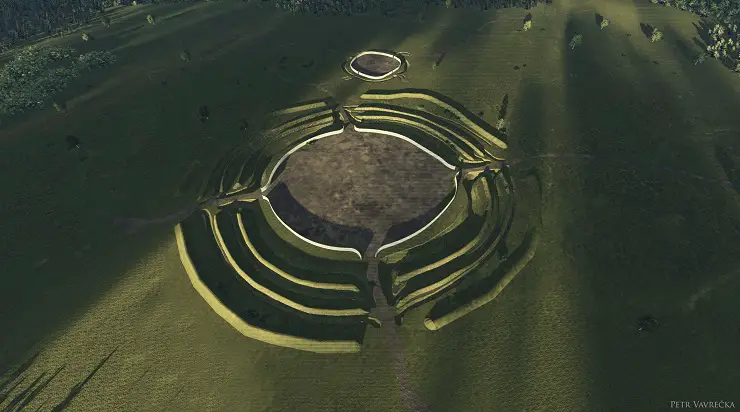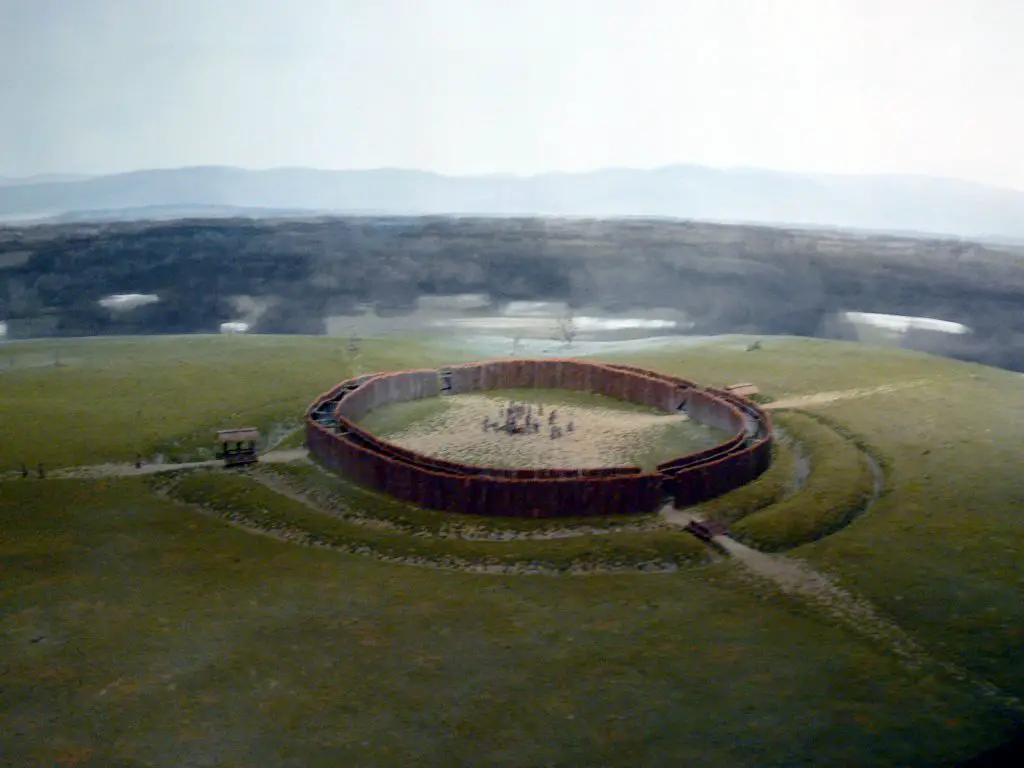A recent discovery in the Czech Republic has the potential to unravel one of Europe’s long-standing archaeological mysteries.
Known as roundels, these circular structural remnants, dating back around 7,000 years, have been found scattered across Central Europe. Remarkably, they predate iconic landmarks like Stonehenge and the Egyptian pyramids by more than 2,000 years, yet they’ve remained enigmatic throughout history.
Just this month, archaeologists stumbled upon a new roundel near Prague, which stands out due to its larger size and better preservation. This Stone Age marvel spans a whopping 55 meters in diameter.
Miroslav Kraus, who oversees the roundel excavation in the district of Vinoř, expressed the hope of uncovering the building’s actual purpose and age. Radiocarbon dating has provided a broad estimate, placing its age somewhere between 4,900 and 4,600 BC. Beyond that, one confirmed detail is that the roundels belonged to the Stroked Pottery culture, an ancient civilization that thrived from 4,900 BC to 4,400 BC.

These roundels represent the oldest known form of architecture in Europe, making the quest to understand their purpose a crucial piece of the anthropological puzzle.
The existence of roundels was first recognized in the late 1800s, but it wasn’t until the 1980s that their prevalence throughout Central Europe became apparent. Thanks to advancements like aerial photography and drones, researchers have identified approximately 200 roundels across Central Europe, with nearly a quarter of them located in the Czech Republic.
The Vinoř roundel, the most recent discovery, initially surfaced in the 1980s when construction workers were laying gas and water pipelines. However, it’s only now, through a professional excavation led by Czech archaeologists, that the complete structure has come to light.
During their investigation, the team has unearthed animal bones, pottery fragments, and stone tools, shedding more light on the site’s history.

So, what exactly do these roundels look like? From an aerial perspective, they feature concentric circular ditches with gaps acting as entrances. It’s possible that these ditches once held a wooden palisade, as depicted in some renderings.
Adding to the intrigue, roundels had a relatively short lifespan, lasting just two or three centuries during the late Neolithic period. Scholars believe that some societal shift led to their discontinuation around 4600 BC.
As for their purpose, that remains a mystery. Theories abound, suggesting they could have served as military outposts, gathering places for farming communities, or even dwellings. Jaroslav Ridky, a Czech archaeologist, speculates that they likely had multiple functions, with a significant emphasis on social and ritual gatherings, as they appeared to be designed for hosting large numbers of people.

The research into the Vinoř roundel is ongoing, with Czech archaeologists continuing their investigations until the end of September.